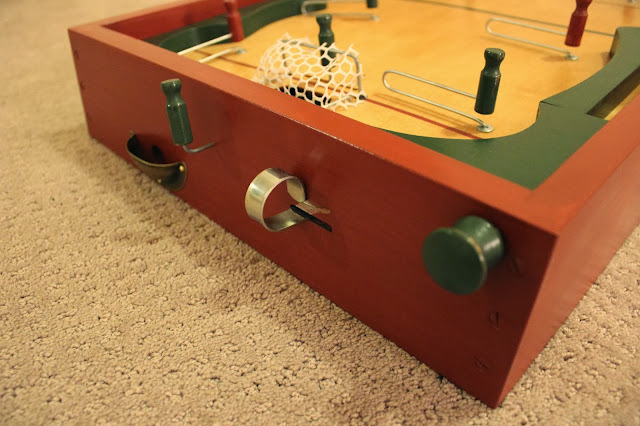Whenever I went to my aunts and uncles houses as a kid the thing I always enjoyed was playing with the old games they had. I'm thirty six and my Dad was the youngest in his family so some of his brothers and sisters had kids that were 20 years older. This meant a lot of vintage games. This Christmas I decided to start a new tradition for my kids. I would build a vintage game for them each Christmas. The plan is to keep them hidden for most of the year and bring them out around Christmas time so they can rediscover them each year.
The first project was somewhat complicated but comes as a kit from Lee Valley. It's based on a table hockey game by Monroe and this particular version dates to about the 1950's. The instructions were fairly complete but could definitely have benefitted from a few more pictures which is why I've included multiple views of the finished project in this posting. I searched online and there weren't very many images to be found so hopefully this post helps someone in the future. (Feel free to point out anything I might have gotten incorrect.)
 I kept to the plan for the most part however I made the sides a bit beefier. I want this to last a long time. The finish is milk paint and shellac.
I kept to the plan for the most part however I made the sides a bit beefier. I want this to last a long time. The finish is milk paint and shellac.
The kids really enjoyed playing with it this year and when they seemed done I tucked it away under a bed for us to find again next year.















